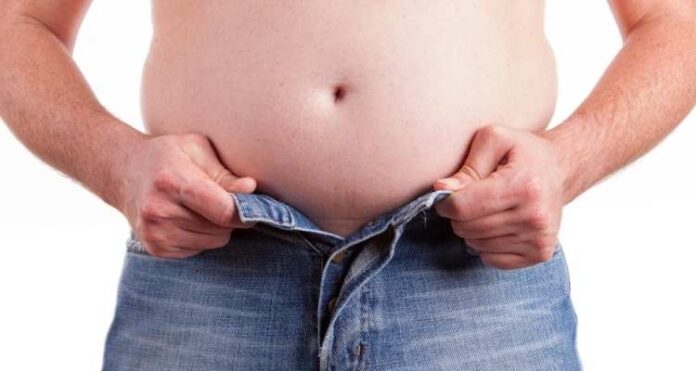What’s your biggest “problem area” when it comes to losing weight? If you’re like many people, it’s the belly. You’ve likely heard that spot reduction doesn’t work, and therefore, how to reduce only belly fat isn’t an option. Is this true?
Indeed, in one small study found in the Journal of Strength and Conditioning Research, researchers asked participants to do hard-core ab workouts for six weeks. While the participants did increase muscular endurance, they didn’t end up with less belly fat, less body weight, or decreased body fat. Other studies have found similar results.
On the other hand, when you start an exercise and diet program, you’re likely to lose more fat from some body parts than others. And fortunately, the belly is one place many people see better results faster.
Interestingly, the abdomen is particularly high in metabolically active fats. These fats tend to respond more to diet and exercise, particularly high-intensity training, as it activates metabolic hormones. If your problem areas are your butt, hips, and thighs, it can be much harder to reduce the appearance of fat (though the fat in those areas also poses fewer health risks).
Where you tend to gain weight depends on several factors, including:
- Age (menopause lowers estrogen and increases testosterone, which can shift weight gain toward the waist)
- Hormones
- Genetics
- Birthweight (babies who are smaller at birth tend to gain belly fat more easily later in life)
- If you’ve had children (women who have given birth tend to have more visceral fat)
Reducing Belly Fat in Seniors
It’s especially important for seniors to reduce belly fat, as extra visceral fat (or deep belly fat) is linked with an increased risk for:
- Insulin resistance
- Type 2 diabetes
- High blood pressure
- Metabolic syndrome
- Heart or cardiovascular disease
- Cancers, including breast and colorectal
- Dementia, including Alzheimer’s Disease
- Breathing problems like asthma
- And premature death
No matter what your age or body shape, excess weight around the waist isn’t healthy. And it’s worse when that fat lies deep within the abdomen around the liver, intestines, and other organs, rather than just what you can pinch on the surface.
High levels of fat can be dangerous because fat cells are actually endocrine organs, which secrete hormones and other compounds and thus have an effect on other tissues. Even people who look thin can have excess abdominal fat that can lead to health problems.
Best Type of Exercise to Burn Belly Fat
You can do those side bends and sit-ups, but you probably won’t lose that gut. Instead, try a mix of resistance exercise (e.g., weightlifting) and high-intensity training. Does riding a bicycle reduce belly fat better than sit-ups? Yes, indeed. In fact, any type of aerobic exercise that burns fat off the entire body, like running, swimming, and cycling, can lead to losing belly fat much more effectively than “targeted training” like crunches or sit-ups. Shoot for at least 150 minutes per week of moderate-intensity cardio exercise or 75 minutes a week for more intense cardio.
To decrease waist circumference, it’s important to stay active by exercising for at least 30 minutes per day. Both walking and bicycle riding are great options. It’s also vital to increase non-exercise activity thermogenesis or NEAT by moving more throughout the day and adding more movement to your routine tasks. For example:
- Park further away from your destination and walk
- Take the stairs
- Stand while at the computer
- Pace while on the phone
- Try to walk 10,000 to 15,000 steps each day
Also, add resistance training or weightlifting for 40 minutes twice a week to your exercise routine as increasing muscle can help you better maintain weight loss.
Keeping Belly Fat Away
It isn’t enough to stay active, though. To keep your waistline trim and prevent an accumulation of visceral fat, it’s also essential to:
- Eat a healthy, mostly whole-foods balanced diet that includes plenty of vegetables, fruits, and lean proteins, and keep portion sizes in check.
- Consume a high-protein diet to help increase metabolism, keep you full for longer, and retain lean mass even as you lose weight.
- Cut back on carbs, especially those that are refined or highly processed. That doesn’t necessarily mean you need to eat a low-carb diet. Instead, replace any refined carbs you tend to eat with unprocessed carbs (e.g., sweet potatoes, whole grains, and legumes)
- Consume enough calcium.
- Ensure you’re eating enough soluble fiber as found in flaxseed, Brussels sprouts, legumes, berries, and avocados.
- Avoid trans fats and sugary foods and drinks (including fruit juice and refined or ultra-processed carbohydrates).
- Eat slowly and mindfully.
- Stay hydrated by drinking water throughout the day.
- Don’t smoke.
- Limit your alcohol intake.
- Get the right amount of quality sleep—between seven and nine hours per night.
- Manage your stress levels and stay positive.
- Drink green tea or supplement with the key antioxidant in green tea (epigallocatechin gallate or EGCG).
At the end of the day, keeping your midsection trim not only makes you look better, but it can also help you feel better and even live longer. Yet magical solutions to drop belly fat don’t exist. Rather, it takes an integrated lifestyle approach that includes moving more, focusing on eating healthy foods, and changing your habits.


